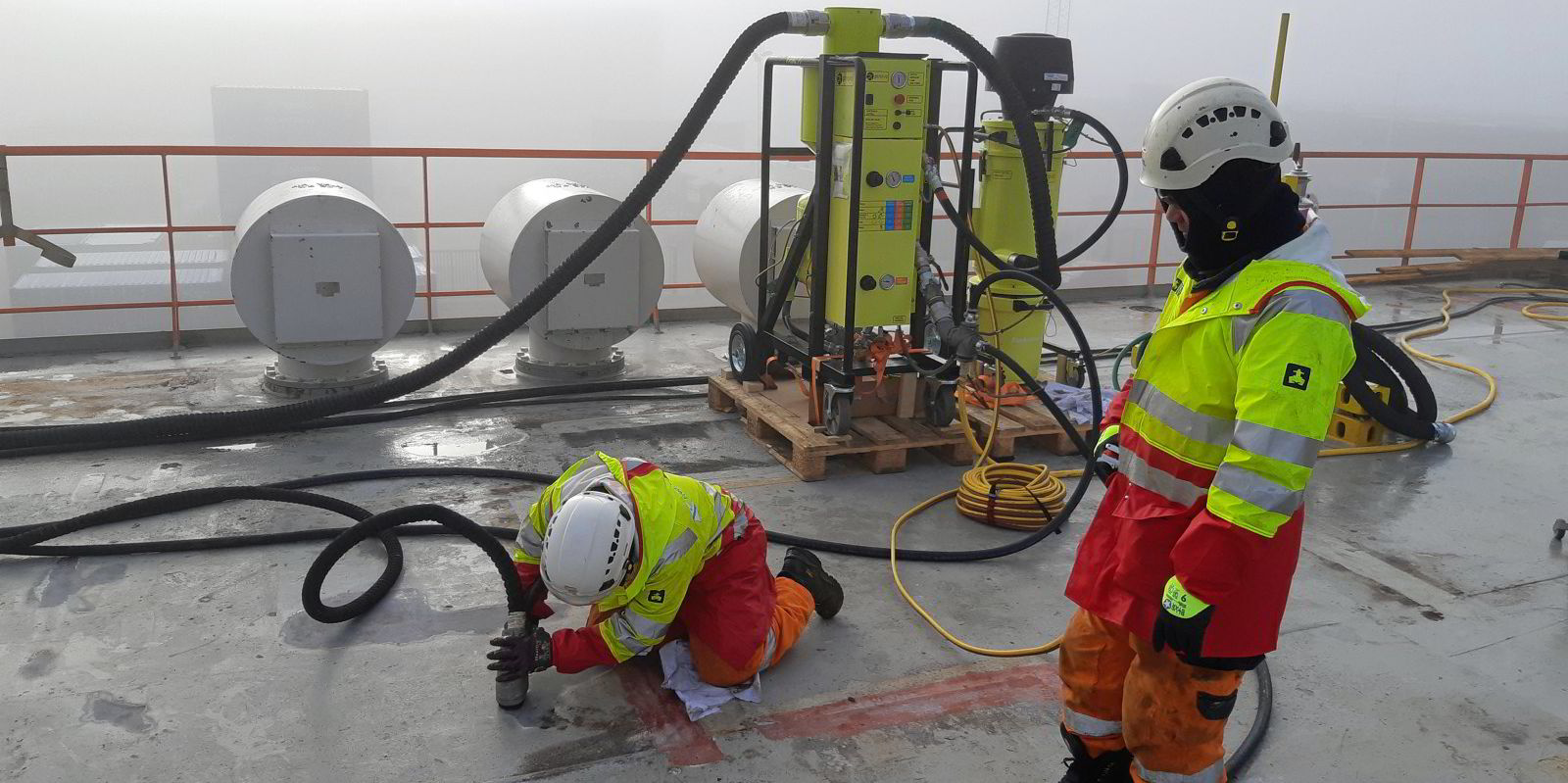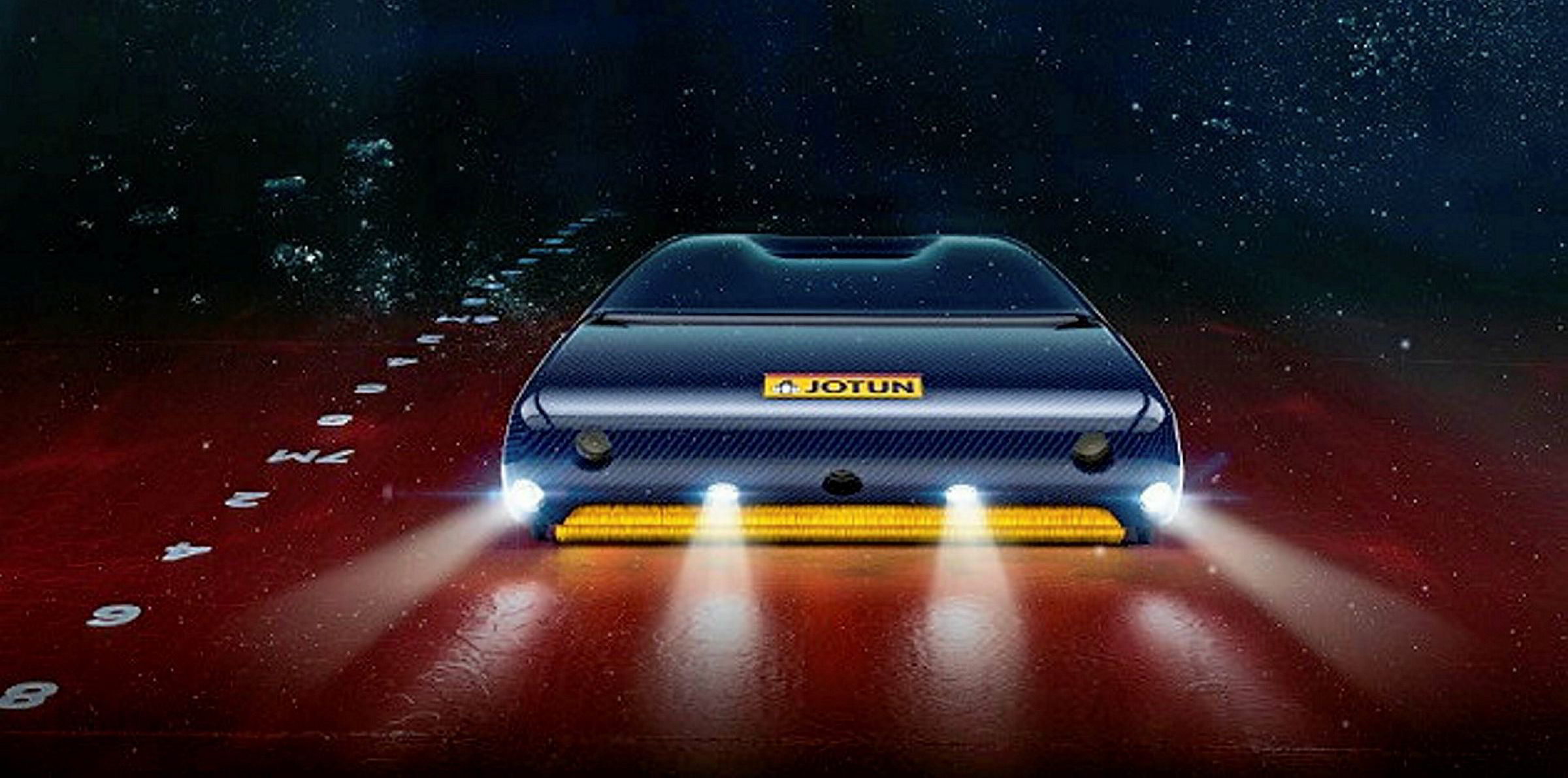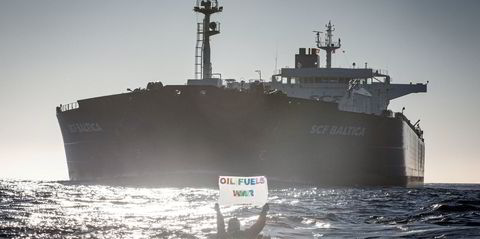The volume of microplastics entering the ocean every year from paint coming off steel surfaces could be as high as 2.25m tonnes, according to the calculation from a company that has a system to help cut that figure.
If Norway’s Pinovo is right, it amounts to the equivalent of up to 225bn empty plastic bottles.
That shocking statistic alongside a desire to improve maintenance on its vessels prompted Klaveness Combination Carriers to start using Pinovo’s vacuum-cleaning technology on one of its ships.
Plastic comprises about 50% of the composition of modern paints, according to Pinovo chairman Declan Mc Adams. But his numbers are a lot higher than most quoted figures.
The International Union for Conservation of Nature calculates about 60,000 tonnes of microplastics enter the sea from paint each year.
Mc Adams says this number is a lot lower than his estimate as it only includes marine coatings, which represent 4% of all paint sold, but not industrial maintenance and protective coatings, which are another 11%.
It also uses a 2009 OECD estimate assuming 1% of paint applied falls off each year. But this would mean an average paint life of 100 years, while marine paints at the very best might have a life of 20 years — meaning at least 5% falls off each year.
However, even just taking the 4% marine coating figure amounts to 1.6m tonnes — and, if half of that gets into the sea, it is still equivalent to 60bn plastic bottles.
Ingested microplastic particles can physically damage the organs of sea life, while leached hazardous chemicals can compromise immune function and stymie growth and reproduction.
The threat of microplastics and chemicals accumulating further up the food chain could also impact whole ecosystems, including the water people drink, food they eat and air they breathe.
Klaveness Combination Carriers has not yet decided to roll out the Pinovo system to its whole fleet, but chief executive Engebret Dahm said the feedback looks good from the trial on one of its ships.
Dahm said the company is using the rust-busting system to clean decks and is looking to use it for small-scale repairs to the coatings of cargo holds. It had some initial problems ensuring enough compressed air capacity on the ship but that was soon solved.
“The standard of the cargo hold coatings is very important as our ships are both dry bulk and tanker ships," Dahm said. "The equipment is easy to move around, there are no microplastics because everything is sucked up, the grit is reused, it is better for the crew and for the environment.”
Pinovo was set up in 2009 as a joint venture between Shell and ExxonMobil, and Mc Adams got involved as an investor in 2014. Its system has been used on oil platforms, bridges, wind turbines and nuclear power stations.

Maritime users also include Fred Olsen Windcarrier and the Norwegian and British navies. Various tools allow varied surfaces, angles and bends as well as pipes and even torpedo tubes to be tackled.
It costs about €100 per day to rent a unit that can be used to clean decks and ship superstructures while vessels are at sea. The closed units prevent paint flakes being lost overboard while reusing blasting grit.
Pinovo concedes it can do little to solve the problem of paint lost from hull coatings between dry docks, but Mc Adams told TradeWinds that a robot system is being tested by Norwegian firm Remotion that uses high pressure water jetting to remove paint and a Pinovo unit to give it the sand-blasted surface to which a new coating can bond.
“That [hull cleaning] is going to come, and a lot of that will be done with robotics and a combination of different forms of clean blasting,” Mc Adams said.
He added that there is nothing wrong with jet-water cleaning in a dry dock as long as old paint flakes are collected and not washed out to sea. But he claimed many Asian yards do not collect paint residuals.
“There should be a requirement to collect the used blasting material, with its heavy metals and other toxic components — and, most importantly, the rust and paint residuals as they are blasted off," Mc Adams said. "Otherwise, they will largely find their way — directly or indirectly — into the ocean.”







